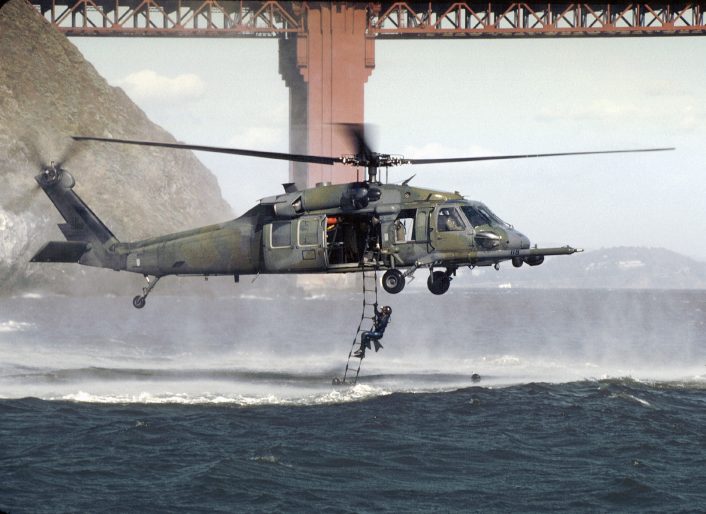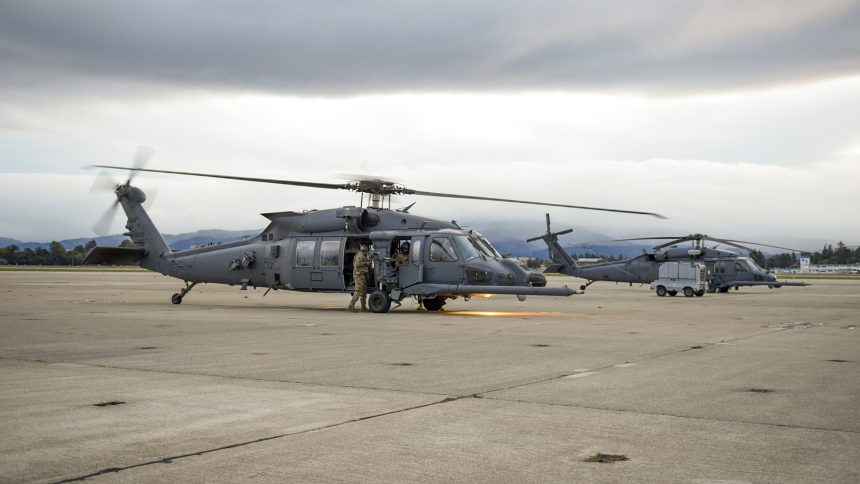The 129th RQW, located at Moffett ANG Base, Mountain View, has now received the first two new HH-60W Jolly Green II helicopters to replace its current HH-60G Pave Hawks, with four more set to arrive by the end of 2026.
The California Air National Guard’s 129th Rescue Wing (RQW) recently started its transition to the new HH-60W Jolly Green II Combat Rescue Helicopter. The Wing received this month the first two of a total six helicopters, with the remaining ones to be delivered by the end of 2026.
With the active duty units now flying the “Whiskey,” as the 56th Rescue and Rescue Generation Squadrons at Aviano Air Base, Italy, flown the last mission of the active duty U.S. Air Force HH-60G Pave Hawk fleet on Dec. 18, 2024, the continuation of the deliveries to the ANG will standardize the rescue fleet of only one helicopter model.
“[The HH-60W] brings new systems with new interoperability, with those systems not only with our aircraft, but with the rest of the combat Air Force,” said U.S. Air Force Maj. John Kerr, a HH-60 pilot assigned to the 129th RQW.
Impact on the 129th Rescue Wing
The transition from the HH-60G to the HH-60W is a significant step-up for the 129th Rescue Wing, which also operates the HC-130J. With its greater range, survivability, and advanced technology, the HH-60W will enable the unit, which has supported significant operations like Iraqi Freedom, Enduring Freedom, Inherent Resolve and Octave Quartz, to perform high-risk rescue missions more effectively in combat, disaster-stricken areas, or humanitarian operations.
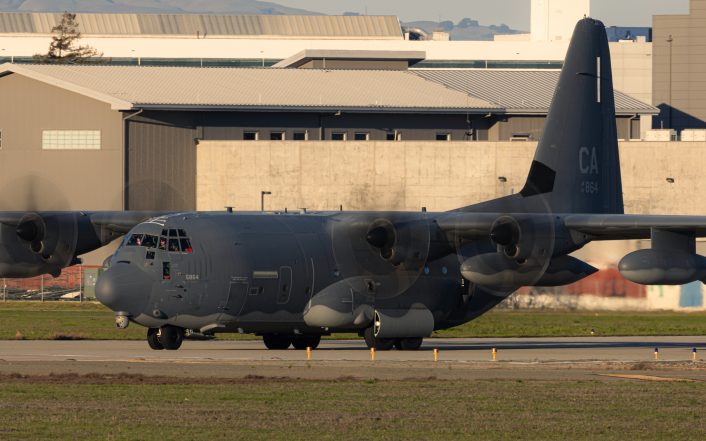
The newer aircraft are overall more reliable, giving the 129th Maintenance Group a fresh start, Kerr noted. “(The aircraft) will do a lot for combat capability and search and rescue, as well as state domestic operations,” he said. “It’ll be a great advantage not just for the wing, but the State of California.”
As the 129th RQW fully integrates the HH-60W into its fleet, it reinforces its commitment to its motto: “That Others May Live.” This transition ensures that the brave airmen of the 129th Rescue Wing will continue their legacy of rescuing those in peril, anytime and anywhere.
The HH-60W Jolly Green II: A Next-Generation CSAR Helicopter
The result of an urgent need for a more advanced and survivable platform was the HH-60W Jolly Green II, a next-generation combat rescue helicopter that significantly improves upon the HH-60G’s capabilities. The transition to the Whiskey-model enhances the 129th Rescue Wing’s ability to operate in high-risk, contested environments while extending mission endurance and effectiveness.
The Jolly Green IIs offer more advantages than their predecessor, with better integration tools, advanced avionics, and improved survivability, including upgraded radar, laser, missile, and fire warnings.
One of the most critical enhancements is the HH-60W’s extended fuel capacity, nearly doubling that of its predecessor. The removal of internal auxiliary fuel tanks allows for more valuable cabin space, giving the crew and pararescuemen greater flexibility to work and provide in-air medical care. Range is particularly a problem in CSAR helicopters, where there might be a need to rescue pilots who have gone down deep in enemy territory.
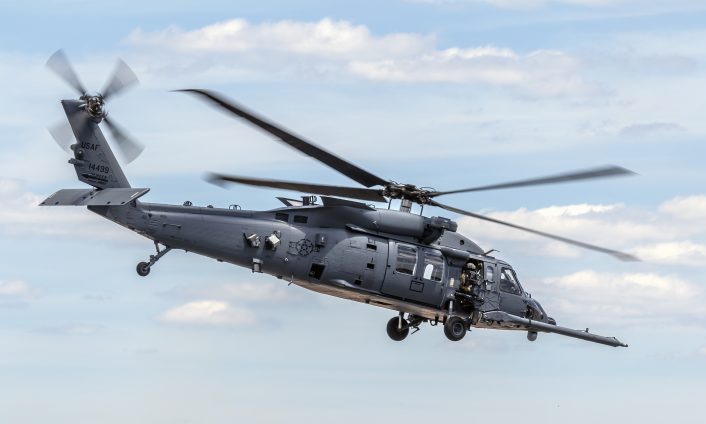
The HH-60W features a fully integrated glass cockpit with modernized mission systems, offering pilots enhanced real-time situational awareness in complex operational environments. The upgraded communication and data-sharing capabilities further improve coordination with joint and allied forces. Additionally, the HH-60W is equipped with advanced missile warning systems, radar warning receivers, and countermeasures that significantly improve its ability to evade enemy threats. Armor plating further enhances crew and passenger protection in high-threat areas.
Another major improvement is its lethality. The HH-60W is armed with GAU-2/A 7.62mm miniguns and GAU-21 .50 caliber machine guns, providing increased defensive capabilities during rescue operations. Meanwhile, a redesigned cabin layout optimizes medical treatment and personnel recovery efforts, ensuring better patient care during casualty evacuations.
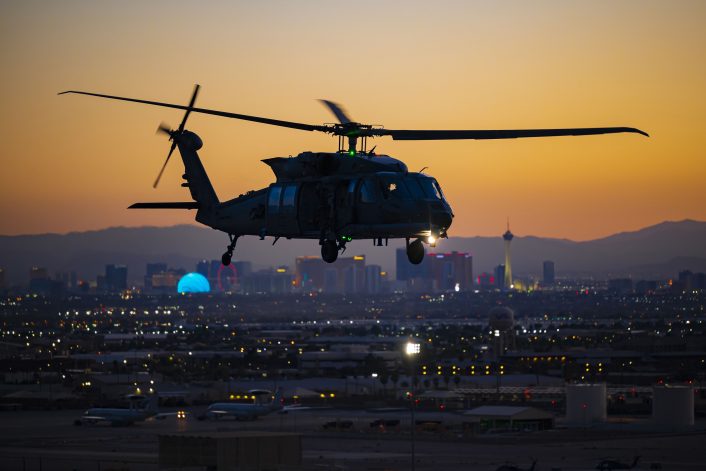
The aircraft can also self-report faults, leading to better troubleshooting, according to U.S. Air Force Senior Master Sgt. Jeremy Mayo, an HH-60 flight chief assigned to the 129th RQW. “If the crew doesn’t notice a problem, or a system could be running more efficiently, the maintenance team is able to access that data,” Mayo explained.
The Jolly Greens are equipped with 701D engines, which provide more power and better torque, helping with weight limits. “What really makes the 60W have a better power advantage is its aerodynamics,” said Kerr. “The blades are much more aerodynamically efficient, so they produce more lift and that translates to more power and torquing capability.”
The HH-60G Pave Hawk
For decades, the HH-60G Pave Hawk has been the backbone of the USAF’s CSAR (Combat Search and Rescue) operations. As a CSAR-specialized variant of the venerable UH-60 Black Hawk, the HH-60G has played a vital role in recovering downed pilots and conducting humanitarian missions throughout its career.
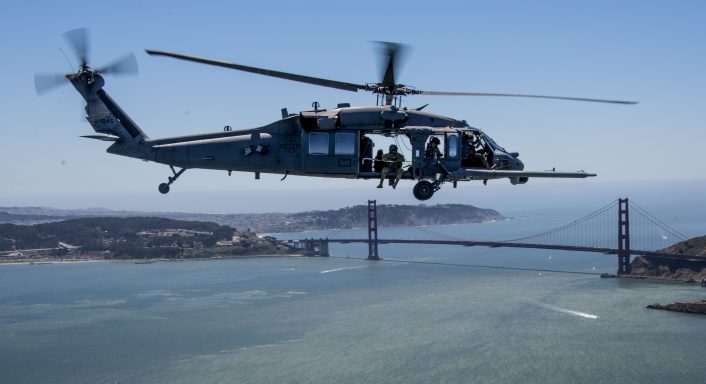
The Pave Hawk provided crucial support during many operations in Afghanistan, Iraq, and other conflict areas. However, following more than three decades of service the HH-60G fleet has begun to show its age. Many aircraft have exceeded their intended operational life, leading to increased maintenance challenges, outdated avionics and survivability concerns in modern contested environments.
